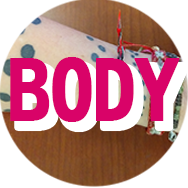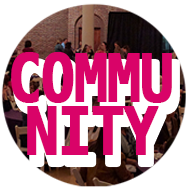Ahmed, Sara. (2013, September 11). Making feminist points. Retrieved from https://feministkilljoys.com/2013/09/11/making-feminist-points/
Alvarez, Sara P.; Baumann, Michael; Day, Michelle; Echols, Khirsten L.; Gordon, Layne M. P.; Kumari, Ashanka; Matravers, Laura S.; Newman, Jessica; Nichols, Amy M.; Ray, Caitlin E.; Udelson, Jon; Wysocki, Rick; & DeVoss, Dànielle Nicole. (2017). On multimodal composing. Kairos: A Journal of Rhetoric, Technology, and Pedagogy 21(2). Retrieved from http://kairos.technorhetoric.net/21.2/praxis/devoss-et-al/index.html
Arola, Kristin L. (2010). The design of Web 2.0: The rise of the template, the fall of design. Computers and Composition, 27, 4–14.
Arola, Kristin. (2011). Listening to see: A feminist approach to design literacy. Journal of Literacy and Technology, 12, 65-105.
Beck, Estee. (2013). Reflecting upon the past, sitting with the present, and charting our future: Gail Hawisher and Cynthia, Selfe discussing the community of computers & composition. Computers and Composition, 30, 349–357.
Beck, Estee N.; Blair, Kristine L.; & Grohowski, Mariana C. (2015). Gendered Labor: The Work of Feminist Digital Praxis. Kairos: A Journal of Rhetoric, Technology, and Pedagogy, 20(1). Retrieved from http://kairos.technorhetoric.net/20.1/reviews/blair-et-al/index.html
Buckley, Cheryl. (1986). Made in patriarchy: Toward a feminist analysis of women and design. Design Issues, 3(2), 3–14.
Committee on CCCC Language Statement. (1975). Students' right to their own language. College English, 25, 709-726.
Didion, Joan. (1968). Slouching towards Bethlehem. New York: Macmillan.
Fishman, Jen, & Fancher, Patricia. (2016) Performing feminist action: The CFSHRC Action Hour. Peitho Journal, 19(1). Retrieved from http://cwshrc.org/actionhour2016/
Fishman, Jen, & Fancher, Patricia. (2015). From installation to remediation: The CWSHRC New Work Showcase. Peitho Journal, 18(1). Retrieved from http://cwshrc.org/newwork2015/about.html
Frost, Erin A., & Haas, Angela M. (2017). Seeing and knowing the womb: A technofeminist reframing of fetal ultrasound toward a decolonization of our bodies. Computers and Composition, 43, 88–105.
Lidwell, William, & Holden, Kritina. (2003). Universal principles of design. Gloucester, MA: Rockport Publishers.
McCorkle, Ben. (2012). Whose body?: Looking critically at new interface designs. In Kristin L. Arola & Anne Frances Wysocki (Eds) composing (media)= composing (embodiment) (pp. 174-187). Logan: Utah State University Press.
Powell, Malea. (2012). 2012 CCCC Chair’s Address: Stories take place: A performance in one act. College Composition and Communication, 64, 383–406.
Reilly, Colleen A. (2004). Sexualities and technologies: How vibrators help to explain computers. Computers and Composition, 21, 363–385.
Rhodes, Jacqueline, & Alexander, Jonathan. (2015). Techne: Queer meditations on writing the self. Logan: Computers and Composition Digital Press/Utah State University Press. Retrieved from http://ccdigitalpress.org/techne
Selfe, Cynthia L., & Selfe, Richard J., Jr. (1994). The politics of the interface: Power and its exercise in electronic contact zones. College Composition and Communication, 45, 480–504.
Wajcman, Judy. (2004). TechnoFeminism. Malden, MA: Polity.
Wysocki, Anne Frances, & Jasken, Julia I. (2004). What should be an unforgettable face…. Computers and Composition, 21, 29–48.
Wysocki, Anne Frances. (2003). With eyes that think, and compose, and think: On visual rhetoric. In Pamela Takayoski & Brian Hout (Eds.), Teaching writing with computers: An introduction (pp. 182-201). Boston: Wadsworth Publishing.






